Table of contents
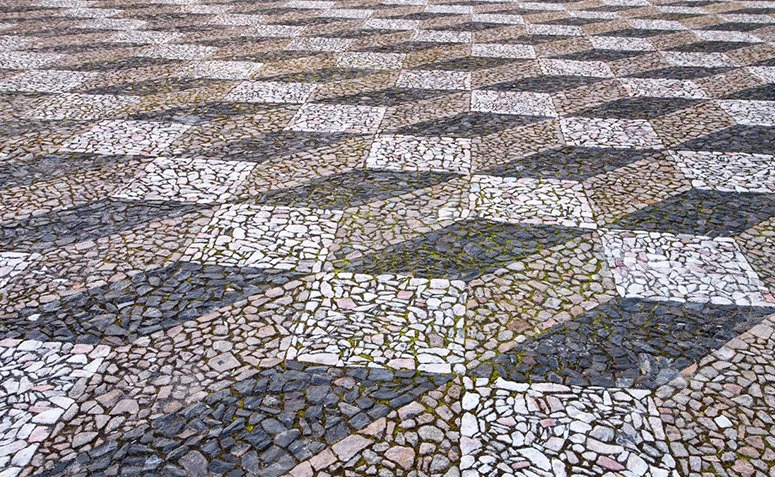
Famous for decorating the Copacabana sidewalk, the Portuguese stone has its place among the preferences of architects and designers.
Versatile and easy to compose, the covering has variations that can fit every type of environment. For you to know how to use this stone in your decoration, we have brought some important information:
Colors of the Portuguese stone
With the increased demand for this type of cladding, black and white stones have gained competitors with different colors that provide a more flexible and different composition, such as those listed below:
White
The color white is one of the most common and has variations of snow and ice, which differ by being lighter or darker. Widely used in facades or as a decorative element in interiors, white brings a more clean and sophisticated proposal.
See_also: Bathroom models: see 40 incredible projects for you to get inspiredYellow
Although yellow, the tone has a more rustic and discreet effect, different from the original color proposal. Widely used in external environments, it makes a great composition with white stones and has great adherence when used in mosaics.
Red
It is the strongest and most eye-catching color among all the options. Red has variations in hue from the strongest and most striking, resembling the color of clay, to a more earthy tone, like a lighter brown. It is best used outdoors, due to the color's characteristics.
Black
Competing with the color white, the black Portuguese stone is also very accessible. Often used to compose mosaics, this tone, which is more reminiscent of graphite, ends up being more sought after for external environments. The proposals for interiors using this tone are very characteristic and demand a lot of attention, not only because it is a dark color, but also because of the stone's finish.
Gray
Also very popular, the gray Portuguese stone has greater adherence to indoor and outdoor environments, mostly for the second option. Whether for wall or floor covering, this shade adds value by enhancing the cut of the stone, bringing a very natural finishing proposal.
Multicolor
Not so well known, the multicolor stone suggests a different proposal and inspires care when it comes to combinations. Because it is a stone with a rustic finish and a very marked appearance, try to make combinations that have a final effect that is pleasant and light.
It is important that you evaluate the available space and the characteristics of the environment before choosing your favorite color. To help you, we will show you some ways to use the different types of shades.
25 ways to use Portuguese stone and transform environments
In order to deconstruct the image of a coating that until then was thought of exclusively for outdoors, we have brought some modern and totally accessible inspirations of different spaces that were transformed when decorated with Portuguese stone.
1. for a very creative entrance
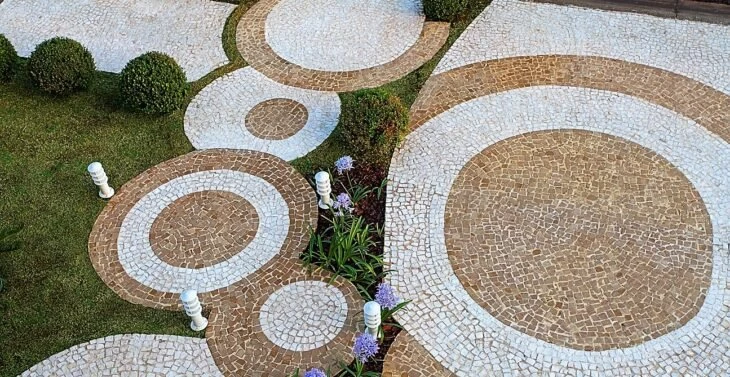
2. in proposing a clean staircase
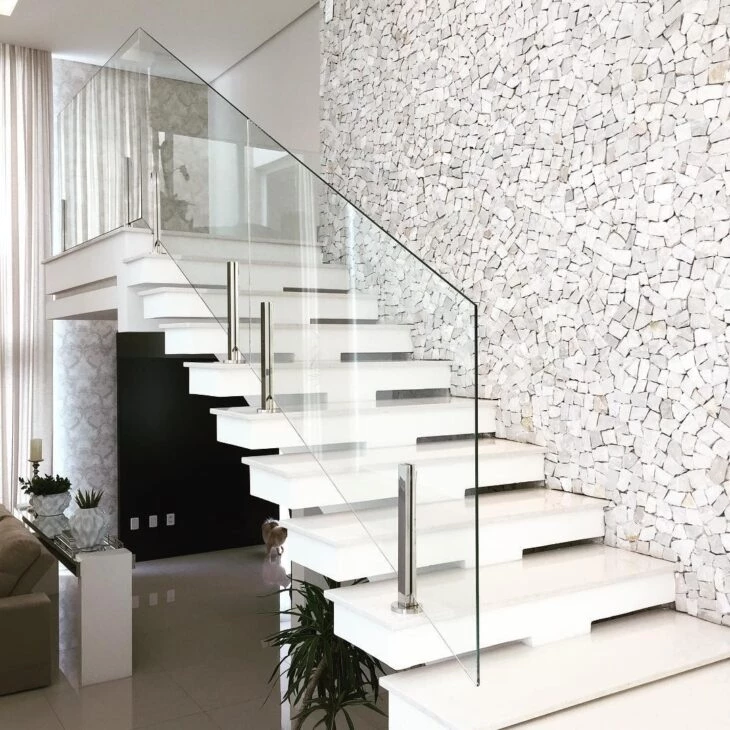
3. or more modern and full of details
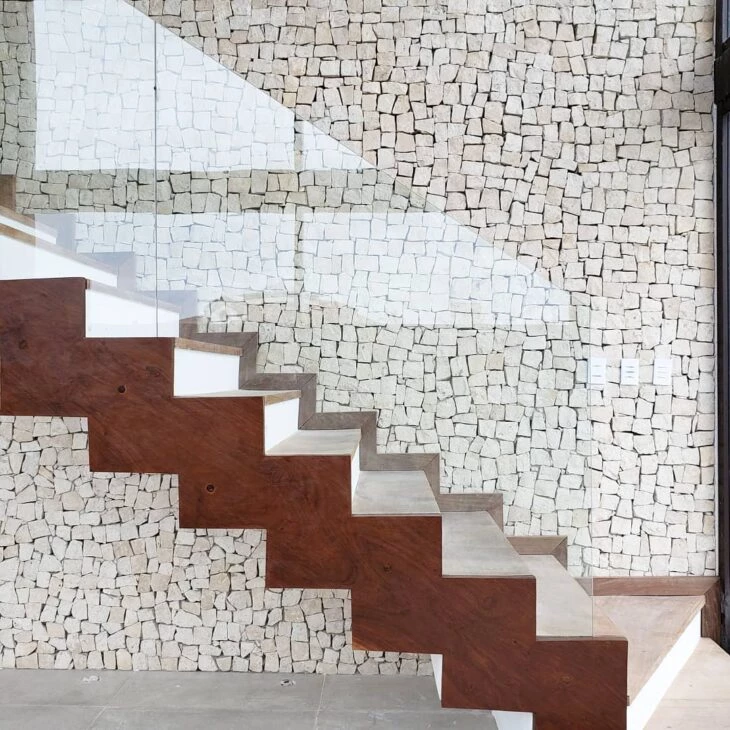
4. using in steps is also a good initiative
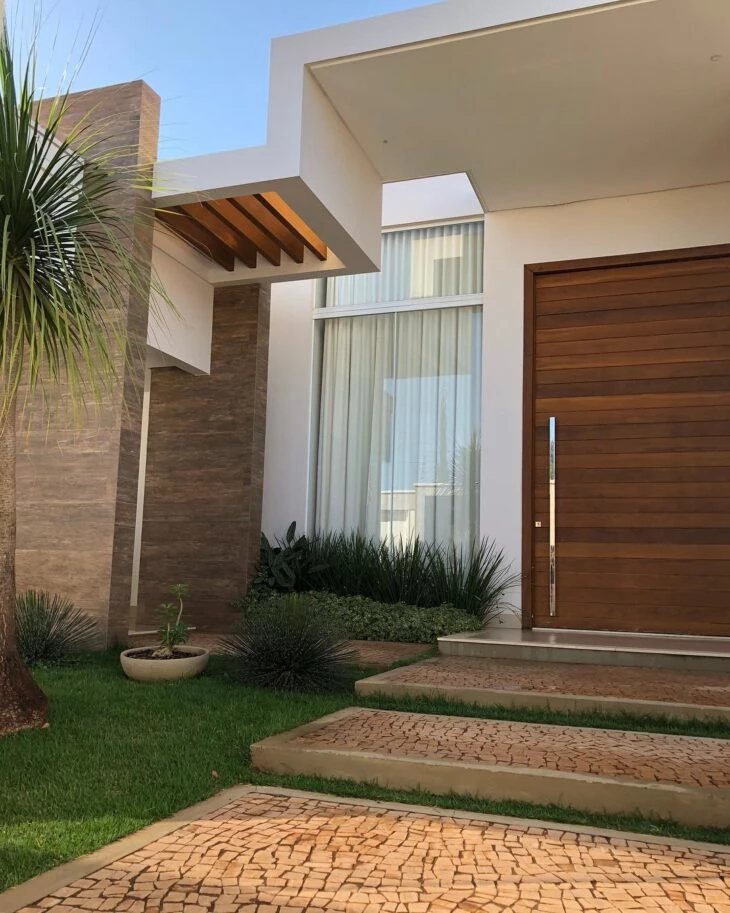
5. for a subtle touch in the bathroom
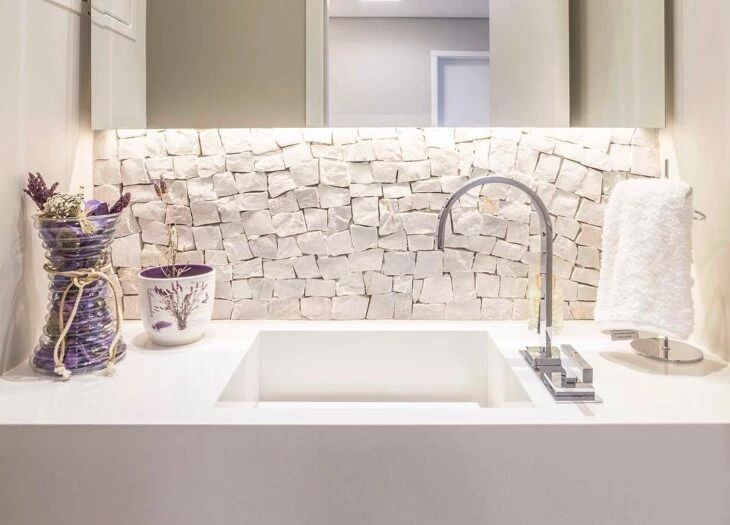
6. or an incredible effect in the room

7. another proposal for steps in the outdoor area
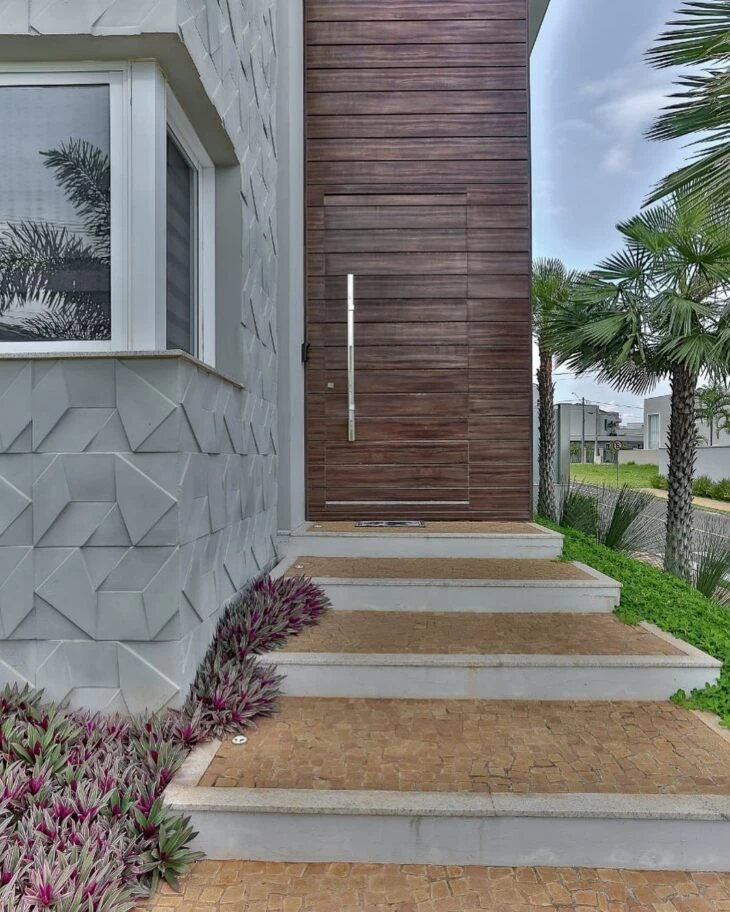
8. and even for a bolder proposal
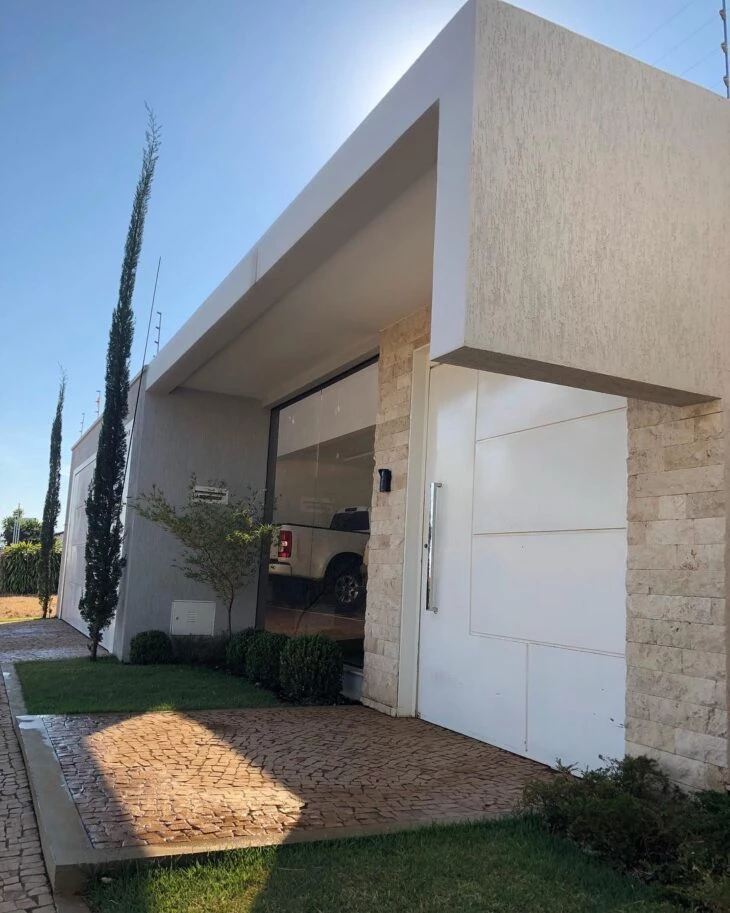
9. invest in good lighting for a different effect
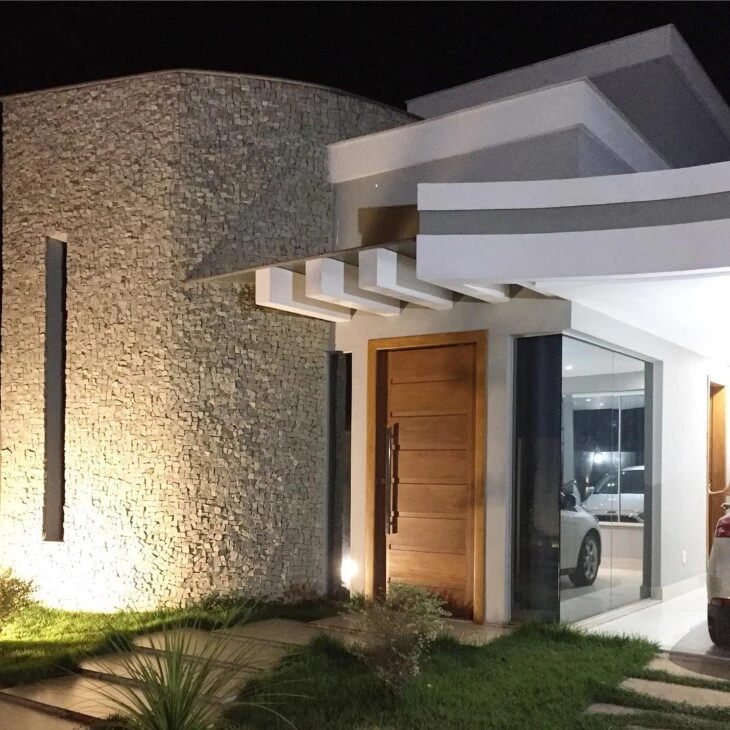
10. highlighting with elegance
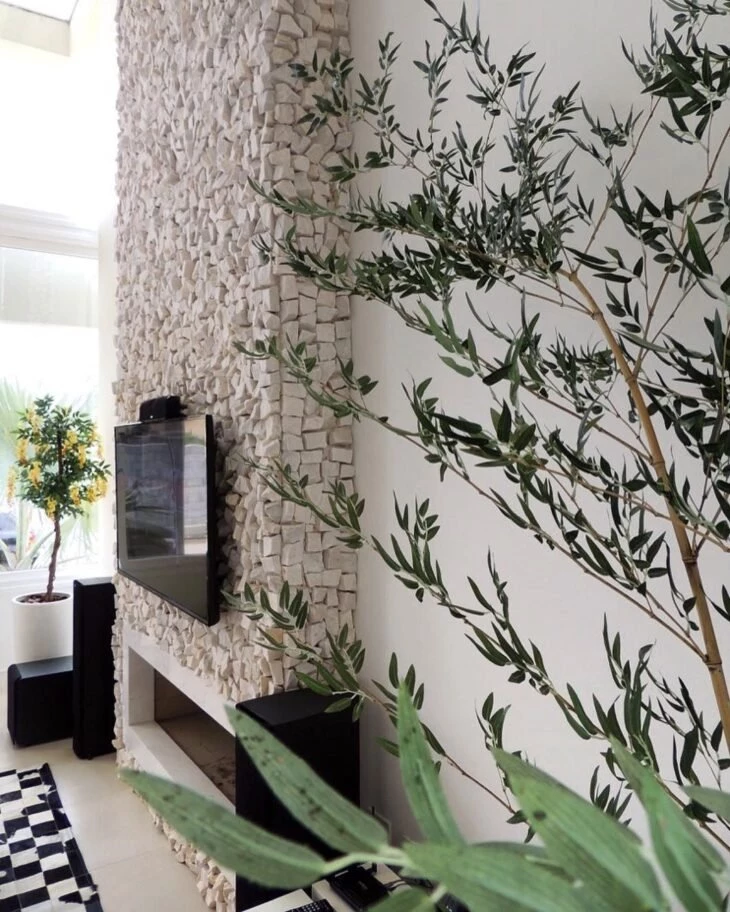
11. and must match the style of the facade
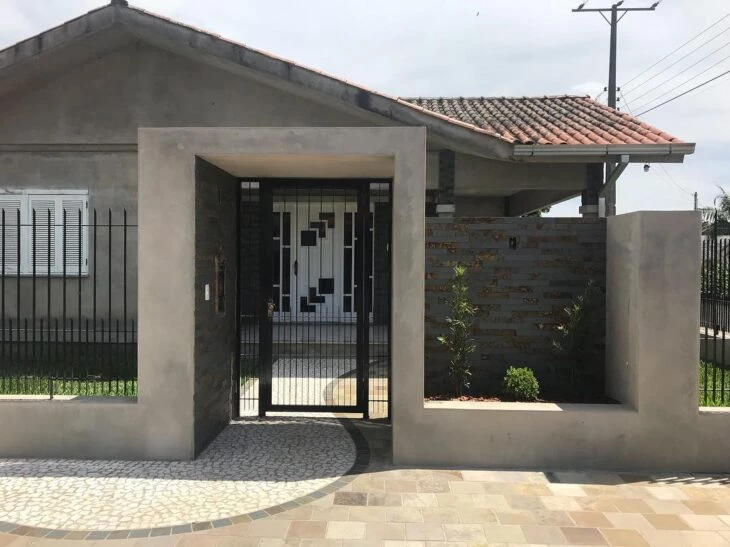
12. always harmonizing with the other coverings
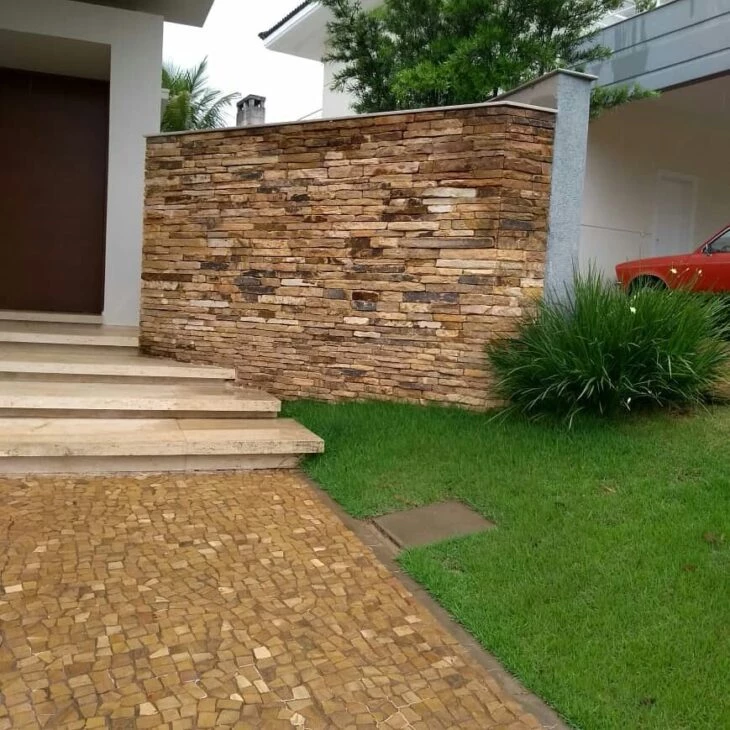
13. whether in more imposing facades
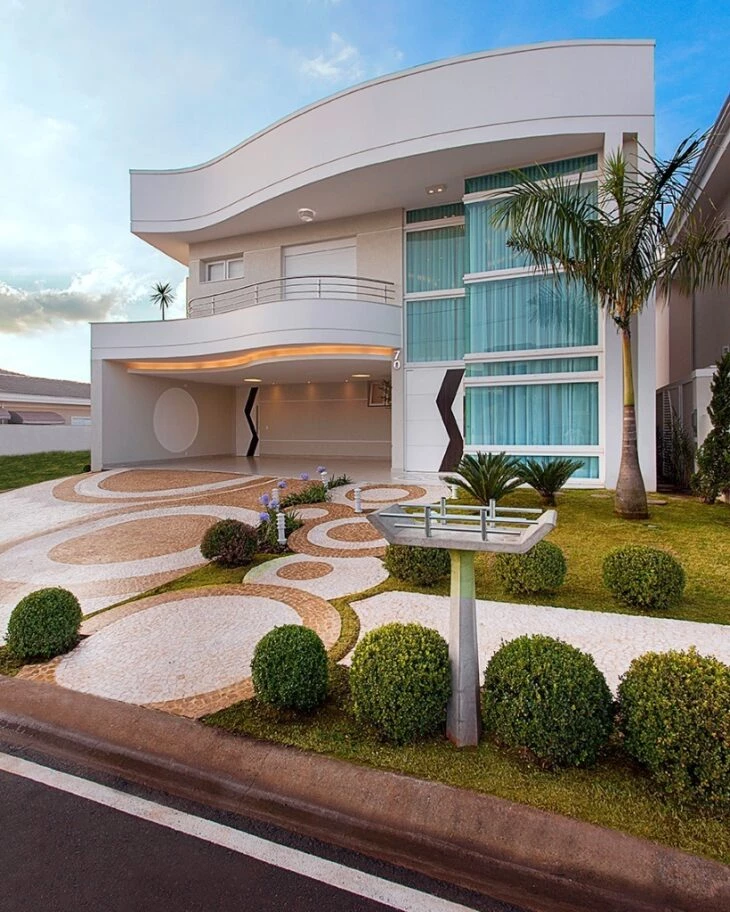
14. or in a more discreet entrance hall
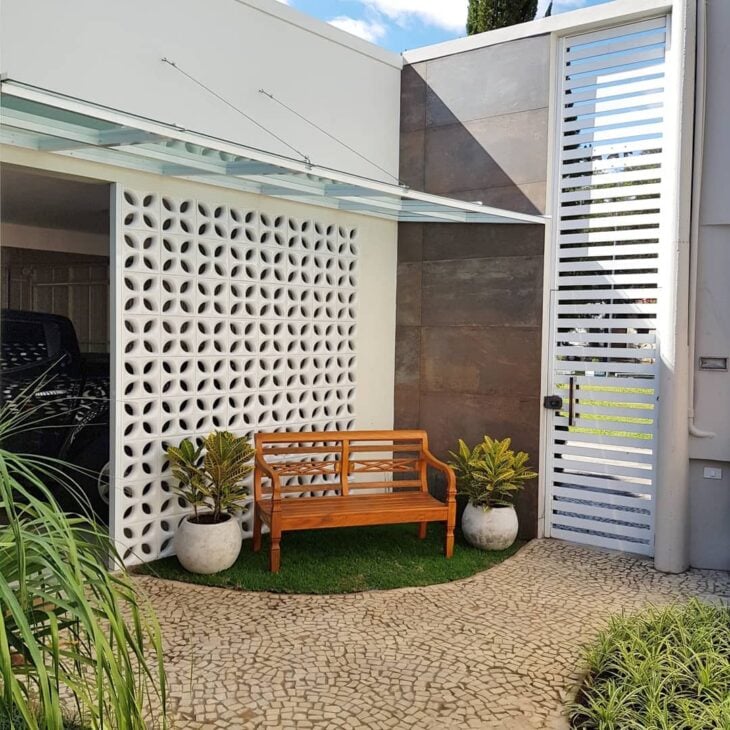
15. for a paged detail in the bathroom
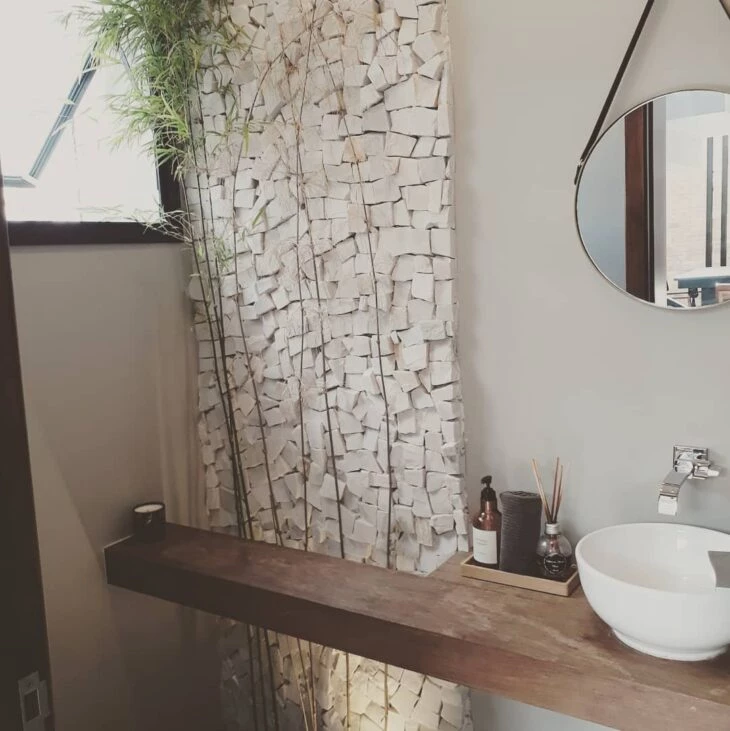
16. or a whole wall in the bathroom
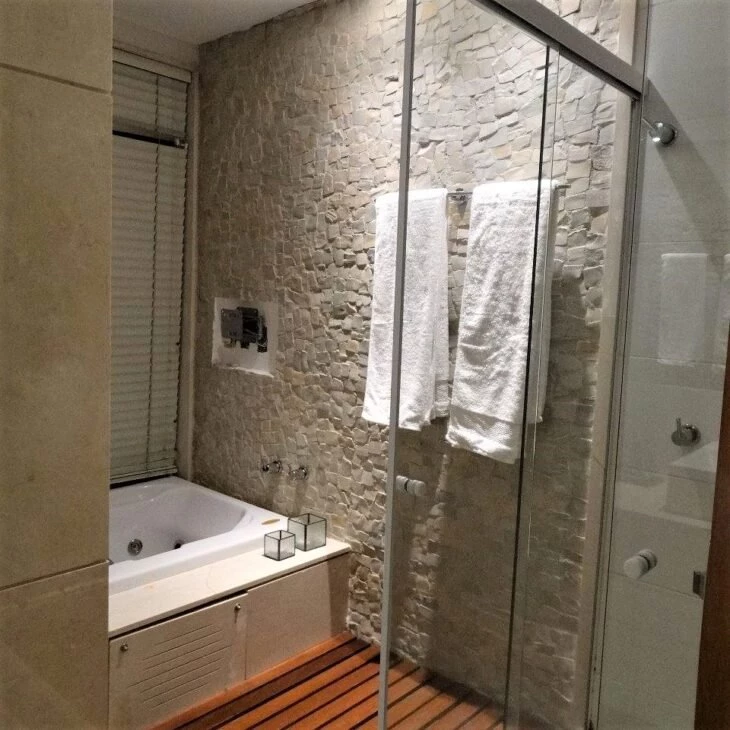
17. use for a clean effect
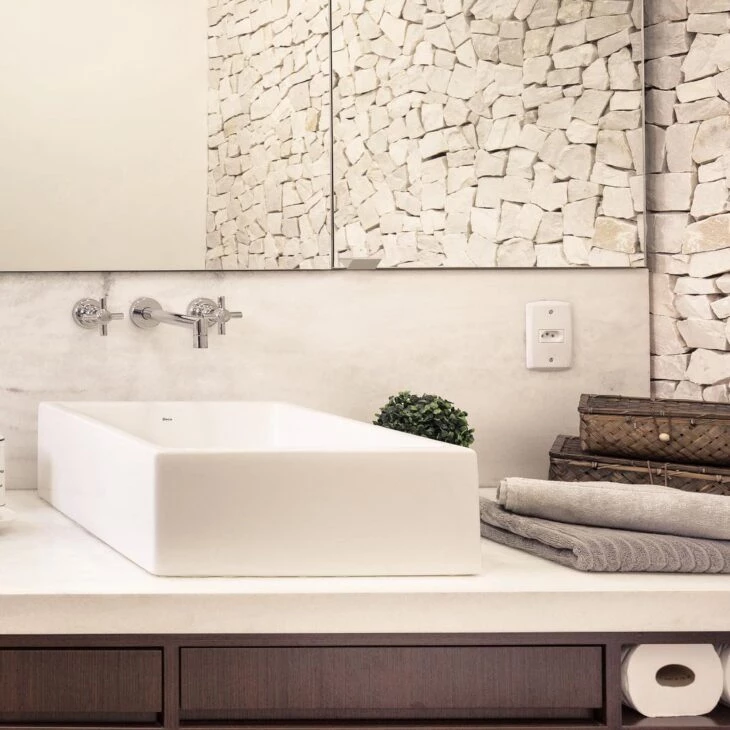
18. or more rustic and stripped
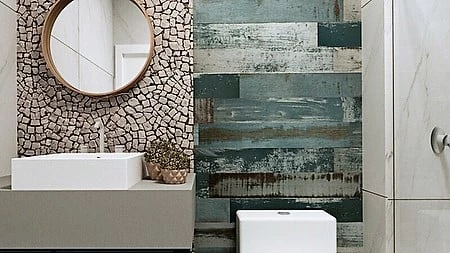
19. for a charming and personalized backyard
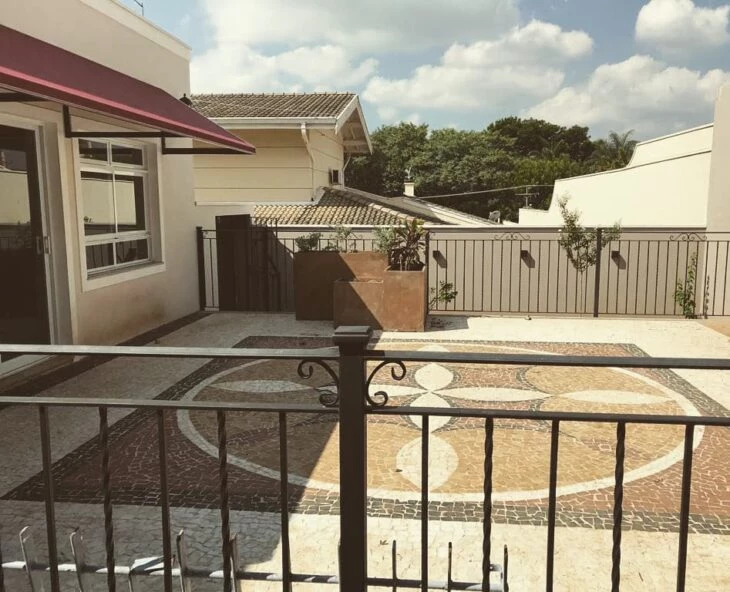
20. on a modern facade
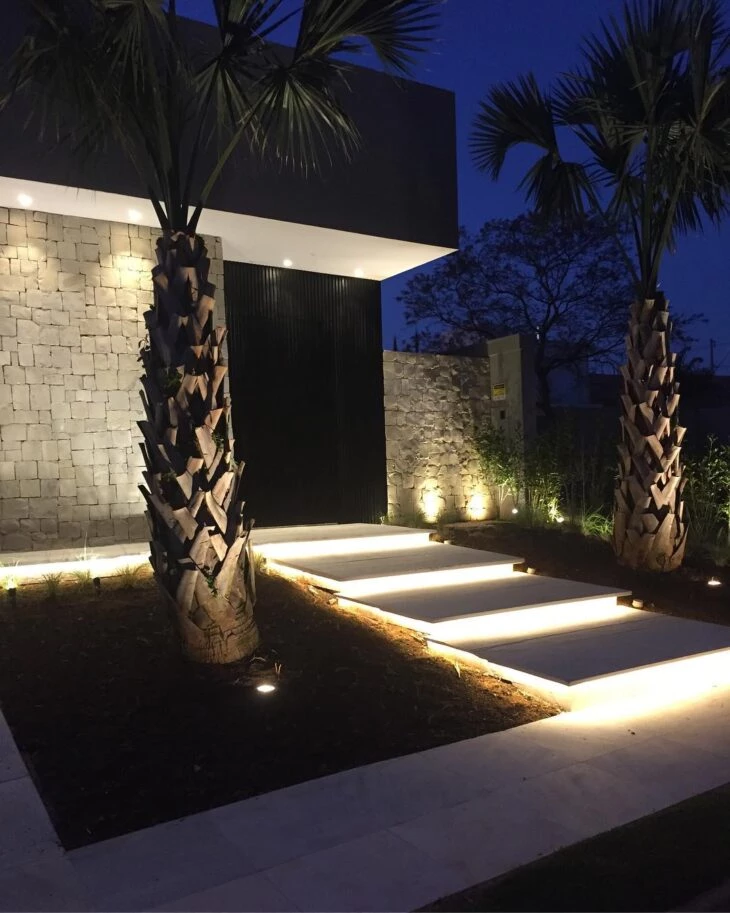
21. or for a very special living area

22. perfect for more rustic environments
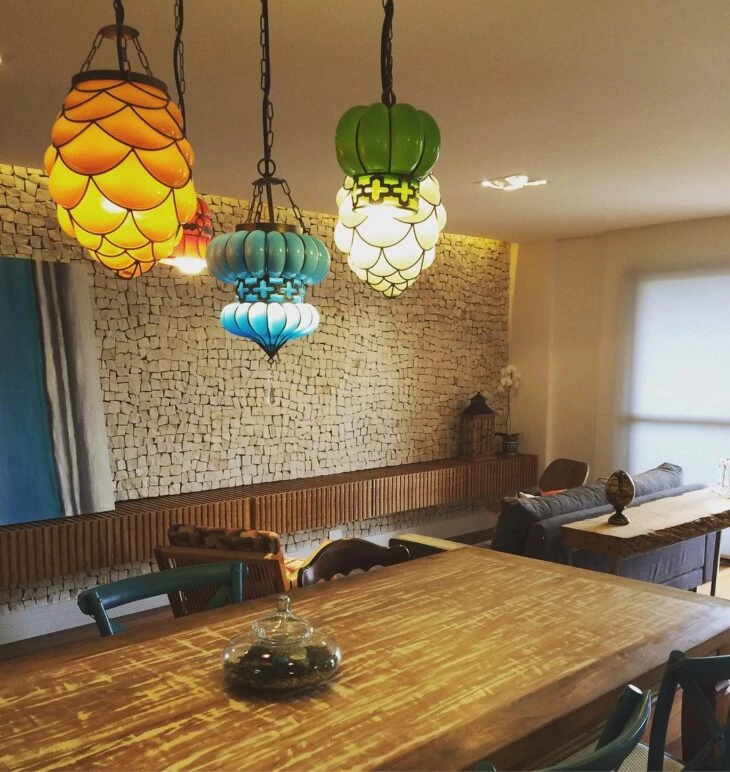
23. and adherent to the most modern spaces
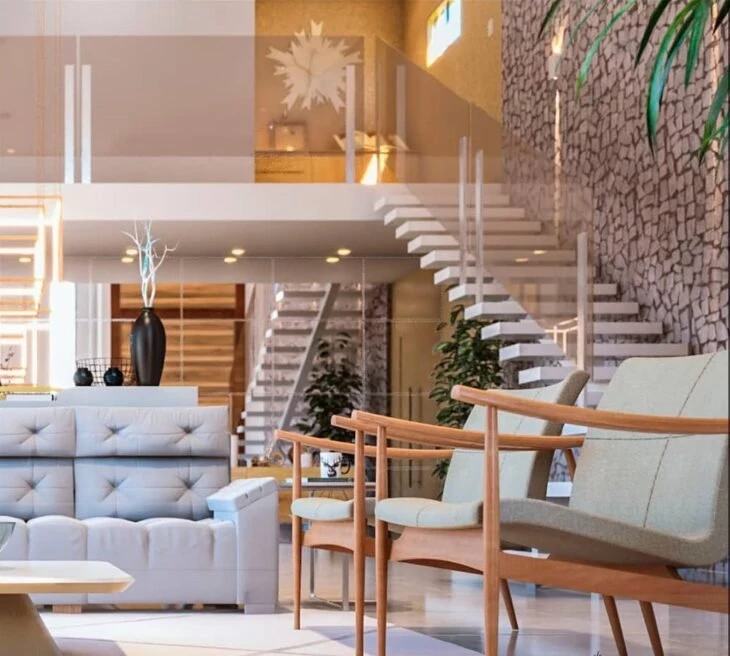
24. subtly composing
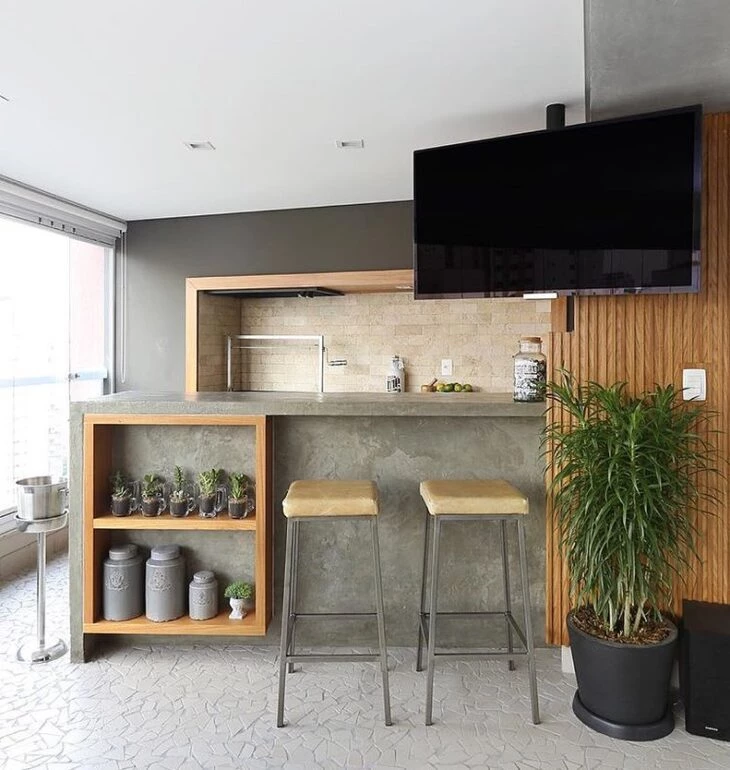
The Portuguese stone has incredible effects in the most diverse forms of application. Whether in the detail of a bathroom, or for an entire facade, the proposal is modern, striking, and versatile.
Price of Portuguese stone
Like most coverings, Portuguese stone is commercialized by square meter. The price variation is not only due to the supplier, but also to the shade of the stone chosen.
The most common stones, such as the white, black, and gray ones vary in price from R$15 to R$30 per square meter, while the more different ones, such as the yellow, vary in price from R$30 to R$35 per square meter. Mosaics, on the other hand, usually have a higher initial investment, which can vary from R$36 to R$55 per square meter.
Laying the Portuguese stone
- Prepare the surface so that it is free of any irregularities that could affect the application of the stones in the area. Choose preferably flat and wide terrains in order to guarantee a more beautiful visual result.
- Start the laying by applying mortar, which must be dry, and lay the stones on it. To make up this mortar, use 1 part cement and 3 parts sand. It is important that the stones are laid close together and that there are no gaps between them. After the stones have been laid, a mixture of cement and sand must be applied to the gaps between them.
- After applying the stones, it is necessary to level them with a socket. When this process is finished, you must water the stones with a little water, using a broom, but being careful not to remove the mortar.
- The finishing must be done 24 hours after the leveling and application of the stones. This process consists in pouring water, more abundantly, over the stones, which must be kept damp for a period of five days. It is recommended to avoid any kind of contact with the laid place, so as not to compromise the final result.
Generally, the companies that provide this type of covering are in charge of calculating the quantity of each material needed, and many of them also offer the service of applying it. It is important that you have a previous project for the positioning of the pieces, so that the designs of the mosaic and its coloring can be selected. The laying of Portuguese stone allows for an infinite number of different usesIn general, stones of 3 x 3 centimeters are used, with a height of 4 to 6 centimeters. This way, you get a standard finishing and an amazing result. Enjoy these tips and improve your creation!
See_also: The best pineapple planting tips to complete your vegetable garden

